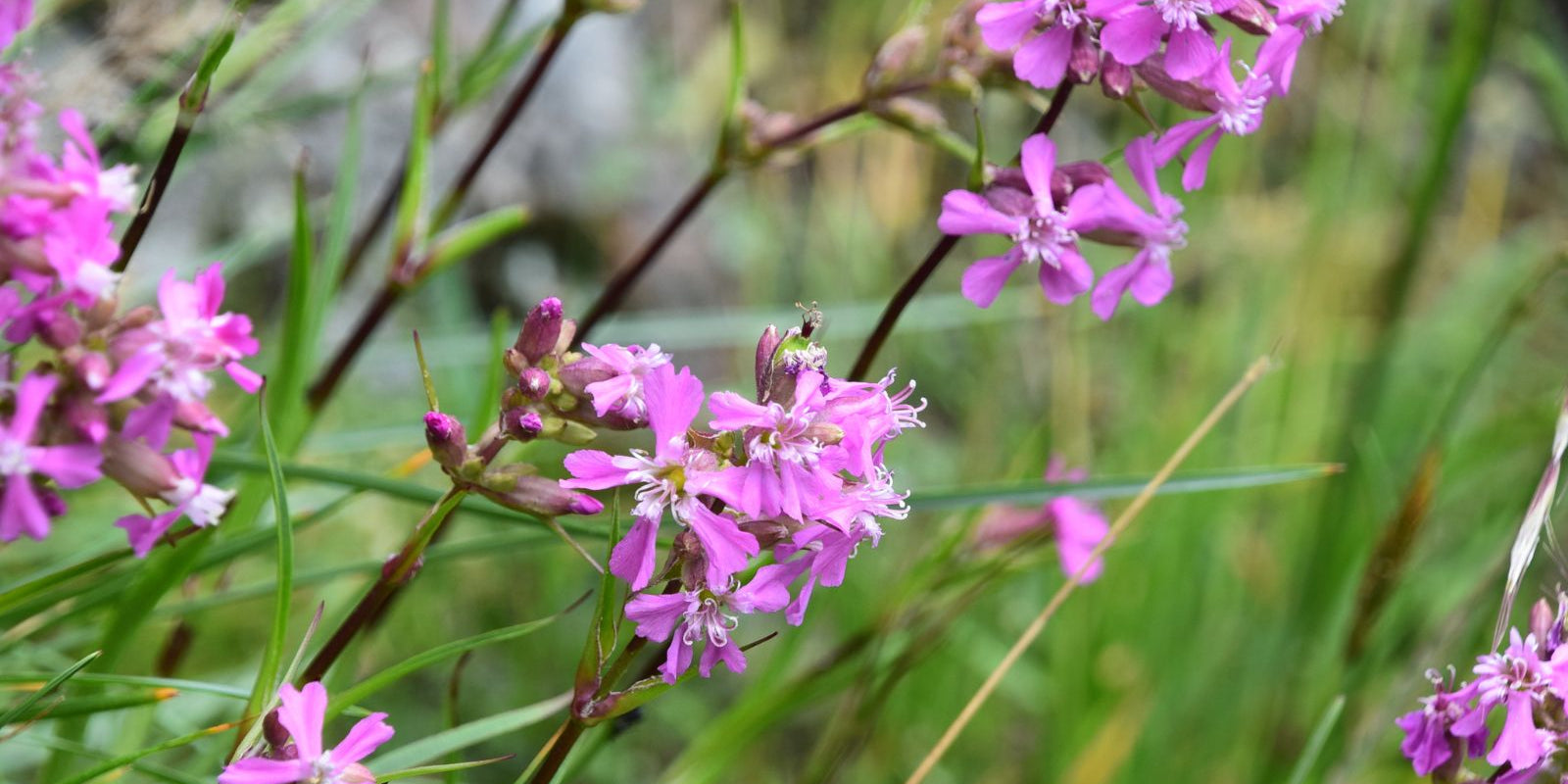Numbers of one of UK’s rarest plants have more than trebled on the craggy slopes of Dumyat, a new survey has found.
A recent survey conducted on the craggy slopes of Dumyat in the Ochil Hills has revealed a significant increase in the numbers of sticky catchfly, one of the UK’s rarest plants.
Volunteers counted an impressive 10,000 flowering stems during a three-day survey this summer, marking a substantial rise from the 3,000 stems recorded back in 2013. This increase in population now represents at least one-fifth of the known British population of this nationally rare species.
Sticky catchfly, a plant with a long history in Scotland, has faced challenges over the years due to factors such as overgrazing and gorse encroachment. With fewer than 18 populations scattered across Britain, the plant has sadly disappeared from many of its former locations. However, the crags and screes of the Ochil Hills have remained a stronghold for this species, providing a habitat where surviving colonies can thrive despite the challenges they face in other areas.
The distinctive features of sticky catchfly, including its vibrant pink flowers and sticky stem that deters herbivorous insects, make it easily identifiable in its natural habitat. The plant's ability to trap insects, such as aphids, on its stem is believed to play a role in fertilising its roots, ensuring its continued growth and survival. With its presence on the craggy slopes of Dumyat in the Ochil Hills on the rise, efforts to protect and conserve this rare species are crucial to its long-term survival and preservation.

The Future Forest Company team spearheaded and organised the survey at Dumyat in partnership with NatureScot, local naturalists, the Botanical Society of Britain and Ireland (BSBI), TCV Scotland, the National Trust for Scotland, and the University of Edinburgh. The University of Edinburgh is also actively involved in efforts to bolster the local populations on its adjacent land at Drumbrae. This collaborative effort brought together a diverse range of expertise and resources to conduct a comprehensive survey of the area.
Since 2021, The Future Forest Company team of in-field experts have delivered a comprehensive woodland and nature restoration project at Dumyat. As part of this initiative, measures were taken to eliminate sheep from the area and decrease the population of roe deer near the cliffs. A recent survey conducted on the site revealed that only 10% of the existing plants displayed evidence of being browsed by animals.

NatureScot Operations Officer Stuart Bence, who surveyed the Dumyat plants in 2013, said: “These are absolutely amazing results. When we carried out the previous survey, we never thought we would see such high numbers and it is great news that the population seems to be spreading.
“To see the species going from being on a knife-edge to recovering so well is fantastic and just goes to show the benefits that the changes to land management in the area have brought about.
“The success of this joint project demonstrates what can be achieved when many partners and the community come together to enhance nature. Huge thanks to everyone involved.”

Lindsay Mackinlay, Head of Ecology at the Future Forest Company, said: “Many good people have worked over many years to try and conserve this gloriously beautiful plant at Dumyat. It truly is stunning to look at. We were blown away by the willingness of so many people and organisations to help us count the number of plants up in the crags.
“We are even more delighted that the plant appears to be doing really well since we have reduced the grazing up there. It’s so nice to get a good news story and we promise to keep trying to look after it. It’s not every day you have one of the UK’s rarest plants thriving on your land.”

The hope is that the species will continue to flourish and spread throughout the Ochils area, with the support of other land managers working together to connect the existing populations of the plant. The Alva Glen Heritage Trust and TCV have already successfully re-established a viable population at Alva Glen. Furthermore, the Stirling and Clackmannanshire Scottish Wildlife Trust group, in conjunction with the Stirling University Wildlife Conservation Society, have been actively involved in monitoring and surveying the plant to ensure its conservation and growth.
The sighting of the northern brown argus butterfly on Dumyat after a hundred years is a significant achievement for the ongoing conservation work in the area. The changes made to the habitat to benefit the sticky catchfly plant have also proven to be beneficial for the common rockrose plant, which plays a crucial role in the life cycle of the butterfly. By collaborating with Butterfly Conservation Scotland, the project has helped to combine efforts in surveying and safeguarding both the butterfly and the plant species that support its existence.
The team at Future Forest Company would like to thank all the volunteers and partnering organisations who have been instrumental in our efforts to restore the habitats at Dumyat. Without their support and dedication, our mission to help these rare species thrive would not have been possible.
